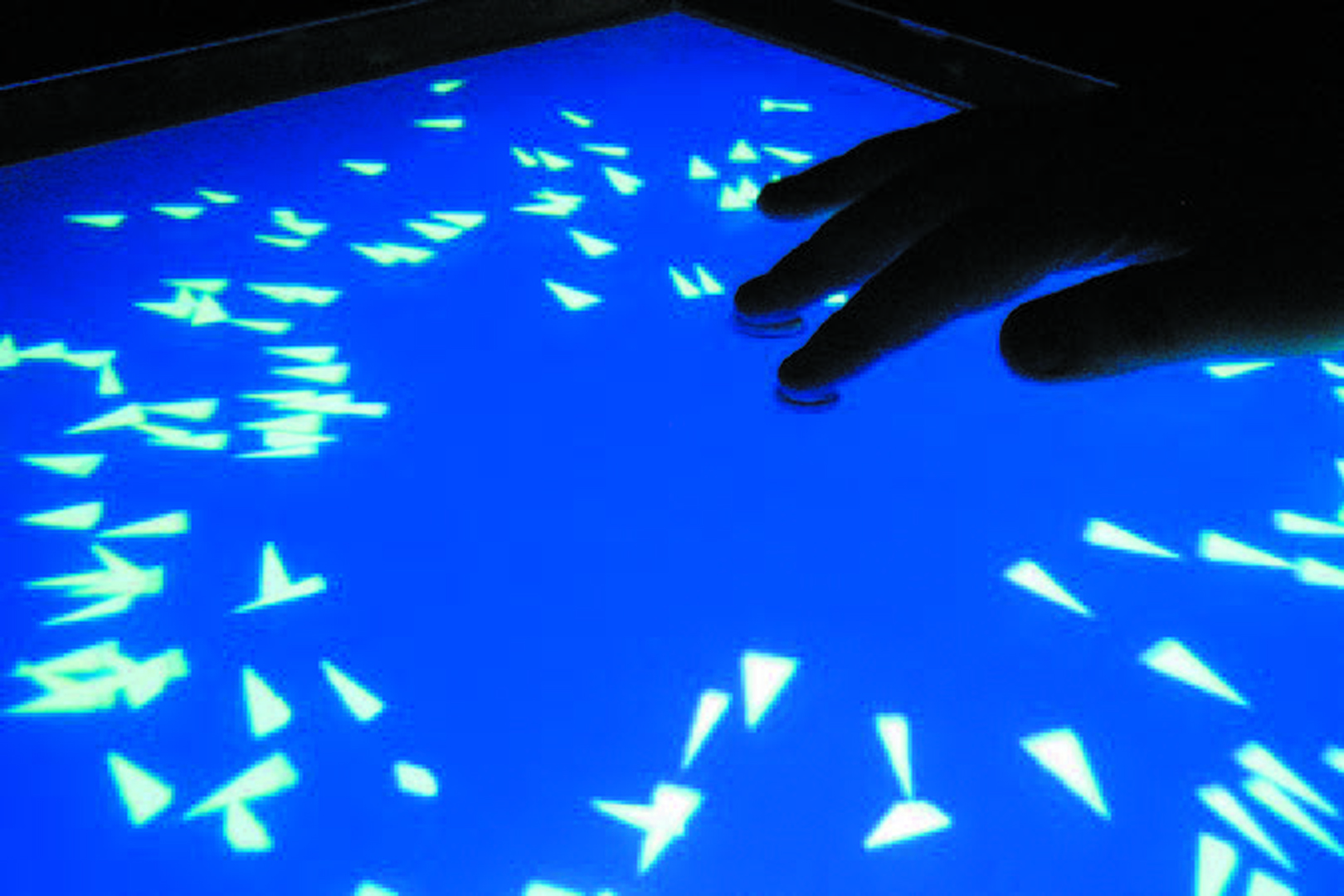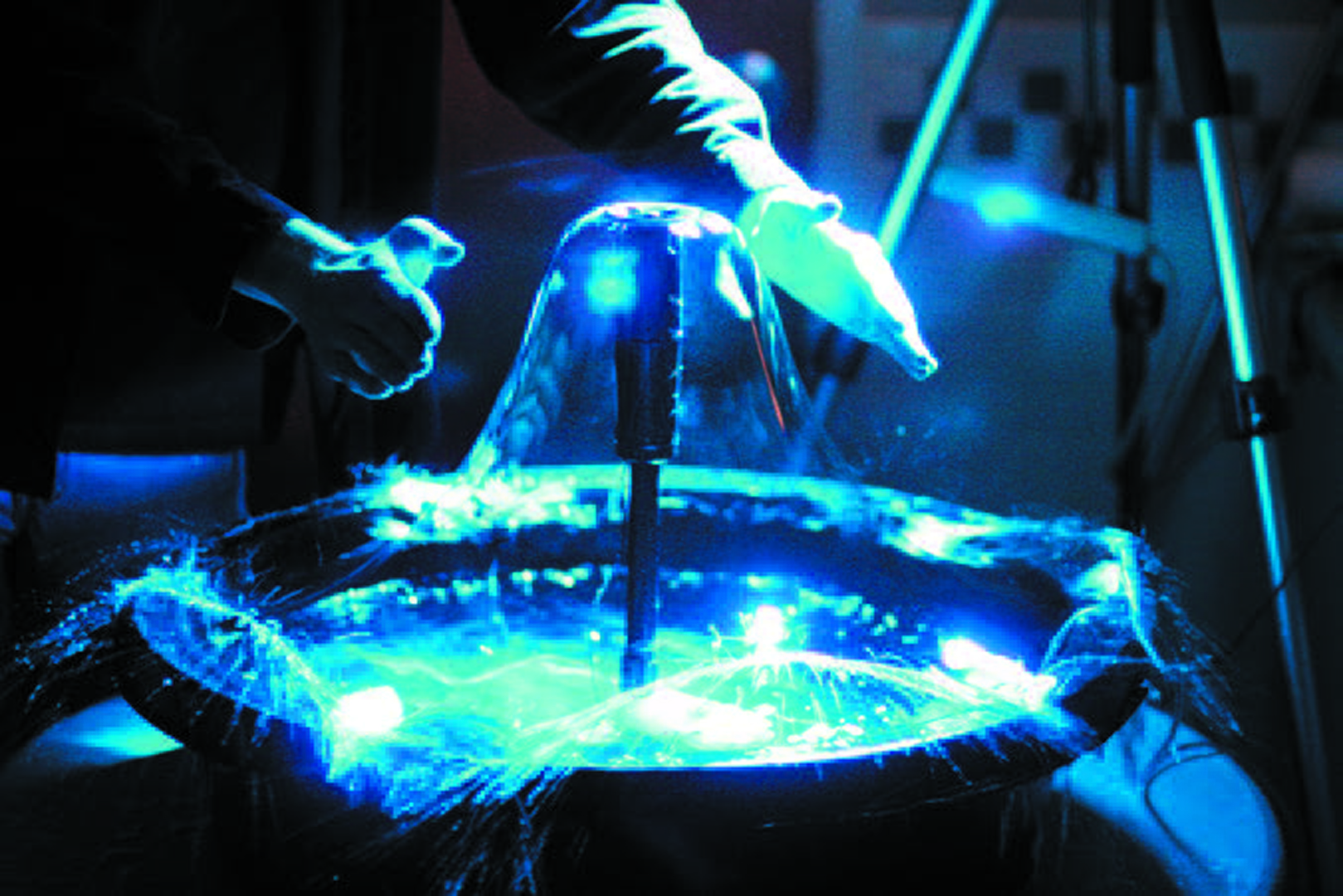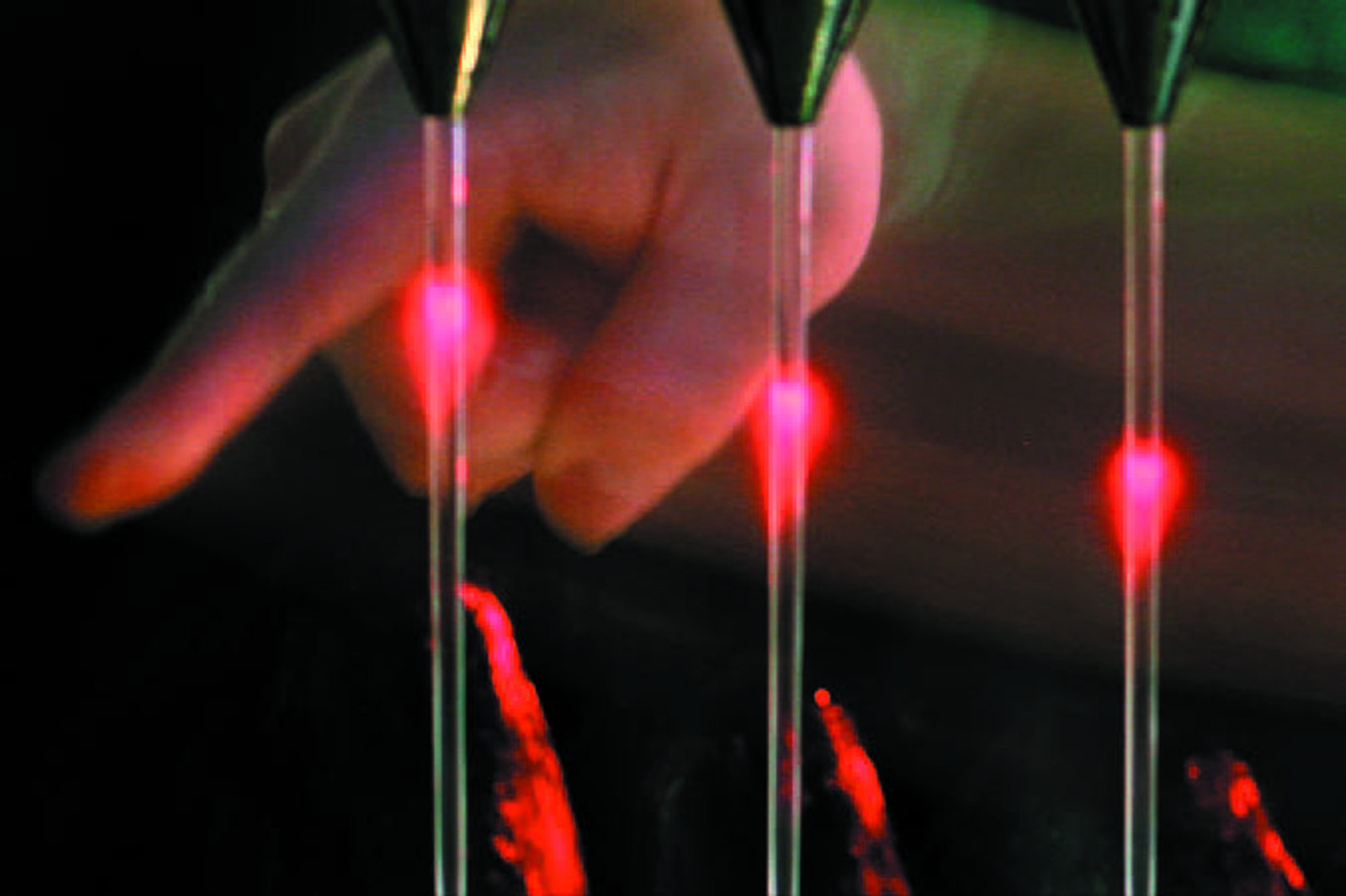“Submerging Technologies” by Dietz, Han, Westhues, Barnwell and Yerazunis
Conference:
- SIGGRAPH 2006
-
More from SIGGRAPH 2006:


Type(s):
Entry Number: 30
Title:
- Submerging Technologies
Presenter(s):
Description:
Fountains, reflecting pools, and other water displays have a long history in art and architecture. In the fountain industry, an “interactive fountain” is one that guests can touch or walk inside of to get wet. This is counter to our typical definition of an interactive system which requires sensors to detect user actions, and an output that changes in response to these actions. In this work, techniques for making truly interactive water displays are presented.
Submerging Technologies is a collection of three interactive water displays (Figure 1) which demonstrate sensing techniques that exploit the electro-optical properties of water itself. Municipal water is fairly conductive, typically 30-1500 μmhos/cm. [CWT 2004]. This conductivity is sufficiently high that the water can be used as a capacitive proximity electrode. Municipal water is also very transparent, and can serve as an optical waveguide.
Other Information:
References
CLEAN WATER TEAM (CWT). 2004. Electrical Conductivity/Salinity Fact Sheet, FS-3.1.3.0(EC). Division of Water Quality, California State Water Resources Control Board (SWRCB), Sacramento, CA.
HAN, J. Y. 2005. Low-Cost Multi-Touch Sensing through Frustrated Total Internal Reflection. In Proceedings of the 18th Annual ACM Symposium on User Interface Software and Technology. UIST ’05. ACM Press, New York, NY, 115-118.
Additional Images:






